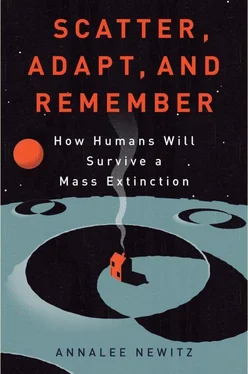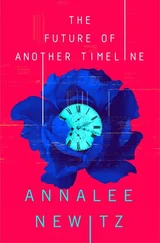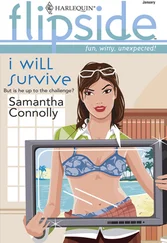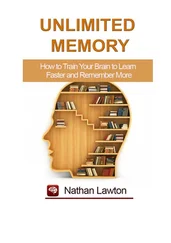Perhaps for this reason, Butler’s great gift as a writer was her ability to tell moving, realistic stories about how people would survive in futures far more harrowing and strange than anything that ever appeared on the Enterprise ’s sensors in Star Trek . Still, she often joked that bad science fiction inspired the themes in her writing as much as growing up black in a white-dominated world. She penned her first short story after watching Devil Girl from Mars on TV late one night, and realizing that she could do better.
The literary world would never put Butler’s work in a class with Devil Girl . Not only did she win many SF literary awards before her death, in 2006, including the Hugo and the Nebula, but she was the first SF author ever to win the MacArthur “genius grant” usually bestowed on fine artists and distinguished scientists. Ultimately, what makes Butler’s work mesmerizing is her incredible ability to help readers see the world from a perspective radically different from their own. In an essay for O, The Oprah Magazine , Butler recalled a formative experience. She visited a zoo with her elementary school class, and watched in horror as the other kids threw peanuts at a caged chimp, taunting him. As the animal wailed in frustration (and possibly madness), the young Butler realized she had more sympathy for this ape at that moment than she did for her fellow humans. She’d caught her first glimpse of humanity as it might look through alien eyes, and the experience left its mark on her imagination forever. “At age 7, I learned to hate solid, physical cages—cages with real bars like the ones that made the chimp’s world tiny, vulnerable and barren,” she wrote. “Later I learned to hate the metaphorical cages that people try to use to avoid getting to know one another—cages of race, gender or class.”
Many of Butler’s novels can be understood as thought experiments in which she offers solutions to the problem posed by that group of children tormenting the chimp. At the heart of this problem are those metaphorical cages. Such cages can be more pernicious than steel bars, because they prevent humans from seeing what we have in common as members of a species in danger of going extinct. How can humans survive in the long term when we seem to be so good at building cages? What would it take to alter the course of humanity?
These are the same questions that I’m asking in this book. We can only meet the challenges of surviving whatever the natural world throws at us by working together as a species in small and large ways. Before we understand the nuts and bolts of survival strategies, however, it’s important to take a short philosophical break and think about why we’re doing this in the first place. Why do we want to survive? What is it that makes life worth saving? How do we hope to improve humanity over the next million years, and what would that look like?
Using a few of Butler’s science-fiction novels, we can think about some possible answers to these questions.
Surviving Is Always a Compromise
Most of us want humanity to survive for a simple reason: We hope there’s a chance for our families and civilizations to endure and improve over the long term. The problem is that we have a hard time imagining what that would look like. We envision a far-future world full of people who look just like us, zinging around the galaxy in ships that are basically advanced versions of rockets. And yet, if history is any guide, the humans of tomorrow will be nothing like us—their bodies will have been transformed by evolution, and their civilizations by the kinds of culture-changing events that have already marked human history. In her trilogy of novels called Lilith’s Brood, Butler dramatizes why some people choose death over survival. They are not prepared to deal with the radical changes required to bounce back from extinction. Still, Butler’s story offers us hope for humanity’s survival, and a new way of thinking about how we’ll do it.
When Lilith’s Brood opens, a civilization of bizarre, tentacle-covered aliens called the Oankali have just kidnapped the tattered remnants of humanity after a nuclear apocalypse. Unlike humans, who evolved to use machine technology, the Oankali’s entire civilization is based on biology. They journey through the galaxy in living spaceships the size of planets, and every part of their environment—from their tree homes to their sluglike cars—is alive. They’re an ancient species who have dealt with many alien cultures, and they view humans as a fascinating anomaly: We’re intelligent creatures who live hierarchically. Apparently this is an incredibly rare combination in the universe, and they suspect it’s what led to our downfall. Luckily, as a representative of the Oankali explains to the protagonist, Lilith, they’ve preserved the few remaining humans in stasis pods while the Earth returns to a healthy state of nature.
Though seemingly benevolent, the Oankali do want something in return for rescuing the remaining humans. They awaken Lilith before all the other people to offer a bargain: They’ll grant humans a rich, disease-free life if they agree to have children with the Oankali. It turns out that the Oankali evolve as a species by merging their DNA with other species, creating an entirely new kind of life every few generations. As the Oankali’s reluctant ambassador, Lilith must explain the deal to her newly awakened fellows and get their consent. Some of the humans are more willing than others, but all of them are suspicious of Lilith’s position—they see her as compromised because the Oankali have already reengineered her to be stronger and more intelligent than an ordinary human. Her capabilities are just a taste of what her half-Oankali children will have. But are the Oankali making the humans better, or robbing them of their humanity? Are they asking the humans to join them as equals, or to become their breeding stock?
One group of humans rebels against the Oankali, refusing to join them and opting to face death rather than form families with creatures they see as hideous oppressors. Lilith, meanwhile, consents to the deal. She and her lover, Joseph, form a typical Oankali family, which consists of a male, a female, and a third sex known as the ooloi. The ooloi can combine genetic material in its body and create mixed-species offspring which would never be possible via the kind of sexual reproduction humans are used to. Though Lilith comes to love her ooloi Nikanj, and her hybrid children, she is plagued by doubts. Maybe the separatist humans are right to refuse the bargain. Maybe the Oankali have pushed her toward accepting them by controlling her neurochemistry, slowly robbing her of the desire to resist assimilation. There’s also the nagging question of whether she’s truly surviving at all, if her children will no longer be properly human.
As the series goes on, these questions become even more thorny. We discover that the Oankali plan for their hybrid children to travel the universe in a living ship whose body will grow by consuming the entire Earth. Though the Oankali have, after long argument, given the separatist humans a refuge on the rejuvenated planet, this is only temporary. The unassimilated humans will die as the ship comes to life.
In some ways, the Oankali are giving humans what we’ve always wanted: perfect health, long lives, plenty of food, and a perfectly peaceful existence. But their bargain begins to sound a lot like what Europeans offered natives when they arrived on American shores in the wake of the great pandemics that were decimating their populations. In exchange for a few valuable commodities like guns and wool, Europeans disrupted the natives’ cultures and completely transformed the lands where they lived. The longer the natives lived among Europeans, the less they seemed like Apache or Inca, and the more they seemed like hybrid peoples with one foot in their parents’ cultures and one foot in their colonizers’. Even though Lilith and her children will survive, humanity as we knew it will not.
Читать дальше






![Аннали Ньюиц - Автономность [litres]](/books/424681/annali-nyuic-avtonomnost-litres-thumb.webp)





